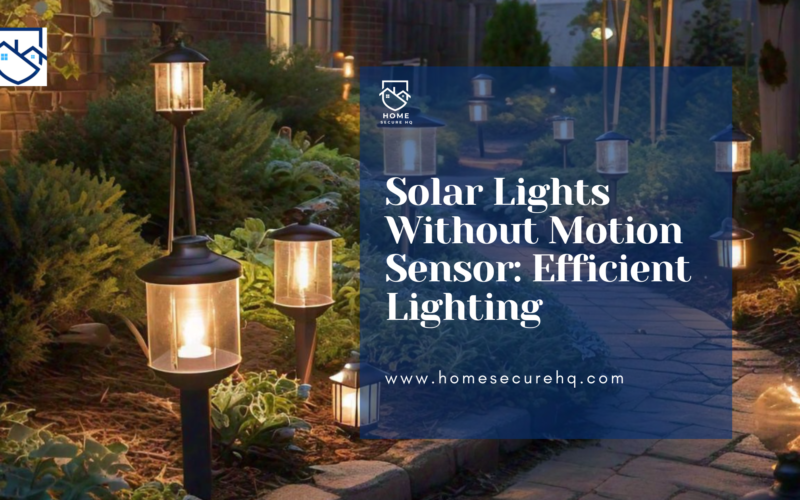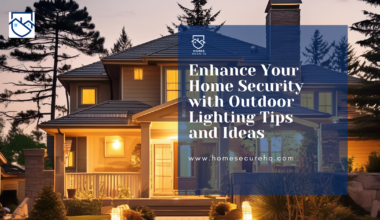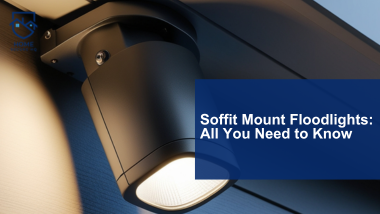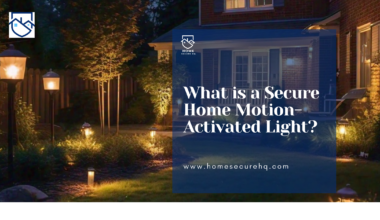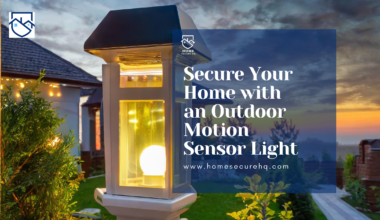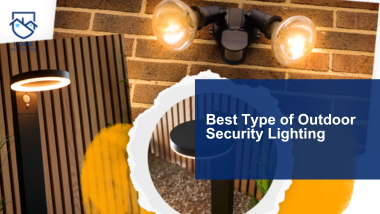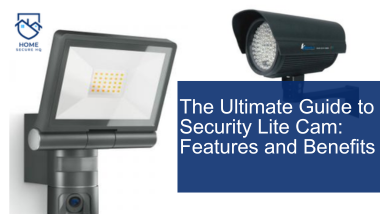Are you looking to brighten your outdoor space with eco-friendly lights that save money?
When you pick solar lights without motion sensors, you’re helping the planet. They work off the power grid, cutting carbon emissions by 100%.
Let’s see how solar yardlights work and why they’re getting more popular.
Understanding Solar Lights Without Motion Sensor
Solar outdoor lighting has changed how we light up our yards and gardens. These lights use the sun’s power to light up our spaces without costing a lot.
They use the sun’s power to light up your paths, gardens, and patios. This means you’ll cut down on your energy use and lower your bills.
Solar-powered LED lights last much longer than traditional bulbs. They can go up to 50,000 hours, or about 30 years of constant light.
By picking solar lights without motion sensors, you’re choosing durable outdoor lighting.
You’re also supporting a greener lifestyle that helps save energy. These lights turn on when it gets dark and off when it gets light again.
This saves up to 50% more energy than regular lights. Even though they don’t save as much energy as motion-sensing lights, they provide steady light all night.
This is great for setting the mood and keeping your outdoor spaces safe.
How Solar Lights Work
Solar lights turn sunlight into electricity with photovoltaic panels. These panels charge batteries during the day.
At night, the batteries power LED bulbs. This process means we get light without using regular power sources.
Benefits of Non-Motion Sensor Solar Lights
Solar lights without motion sensors have many benefits:
- They light up all night
- Help lower energy bills
- Are better for the environment
- Are easy to install with no wires
- Have low upkeep costs
These perks make solar yard lights a great choice for homeowners wanting to improve their outdoor areas.
Key Components of Solar-Powered Lighting
Solar outdoor lighting has four main parts:
- Solar panels: Turn sunlight into electricity
- Rechargeable batteries: Store energy for night use
- LED bulbs: Give off bright, long-lasting light
- Controllers: Control power and light activation
Knowing these parts helps homeowners pick the best solar yard lights for their needs.
Types of Solar Lights Without Motion Sensor
Solar lights are perfect for outdoor use and are eco-friendly. They use the sun’s energy to light up your spaces. Let’s look at some popular types that don’t need motion sensors.
Solar Pathway Lights
Solar pathway lights help guide you on paths and driveways. They’re simple to set up and make your space welcoming. These lights have stakes for the ground and turn on when it gets dark.
Solar Garden Lights
Boost your garden’s look with solar garden lights. They highlight your plants, trees, and garden features. You can choose from spotlights to decorative lanterns, making your outdoor area beautiful day and night.
Solar Deck Lights
Solar deck lights make your deck or patio safer and more inviting. You can attach them to railings, steps, or posts. They give off a soft light, ideal for relaxing outside in the evening.
Solar Patio Lighting
Set the mood with solar patio lighting. You can pick from string lights, lanterns, or tabletop fixtures.
These lights use warm white LEDs and can shine for up to 10 hours after a full charge.
When picking solar lights, think about how bright they are, how long the battery lasts, and how durable they are.
The Nacinic LED Solar light, for instance, shines at 650 lumens and has adjustable settings. For bigger areas, the Werise Outdoor Solar Street Lights light up with 24,000 lumens.
Just remember, brighter lights might use up the battery faster, so think about what you need.
Choosing the Right Solar Lights for Your Outdoor Space
Choosing the right solar outdoor lighting can make your yard look great and save energy.
Think about what you need and how your outdoor space is set up. You might want pathway lights, garden lights, or floodlights for different areas.
How bright the light is matters a lot for good lighting. Solar spotlights can have from 200 to 1,000 lumens of brightness.
For lights that stay on all night, look for ones that last 8–10 hours on a full charge. The battery size is also important, especially if you live in a cloudy area.
Outdoor solar lights need to be weatherproof. Pick ones that can handle water and heat. Also, think about the style to match your home.
You can choose from wall-mounted, post-installed, or freestanding lights for different spots.
When deciding, consider your budget and the brand’s reputation. Set a budget and look for well-known brands that offer quality solar lights.
Reading reviews from other customers can give you good information on how well they work and last.
By thinking about these things, you’ll find the perfect solar lights. They’ll make your outdoor space welcoming and bright all night.
Installation and Placement Tips for Solar Lights
Setting up solar yard lights needs careful thought to get the best results. Making sure they are installed correctly makes them work better and last longer.
Optimal Positioning for Maximum Sunlight Exposure
Put your solar lights where they get direct sunlight for at least 6 hours a day. The best spot is usually south-facing, away from shadows from buildings or trees.
Make sure the solar panels face the sun, especially from 10 a.m. to 2 p.m.
Recommended Installation Heights
The height of your solar lights changes how far they light up and how bright they are. For pathway lights, put them close to the ground.
Wall-mounted lights should be at eye level or a bit higher. Security lights should be 8 to 12 feet high for the best coverage.
Weatherproofing Considerations
Pick solar lights with high IP ratings (4 or above) for outdoor use. This means they can handle different weather.
Keep lights away from sprinklers or places that might flood. Clean the solar panels often to keep them working well. Check the wiring now and then to stop water damage.
- Test lights before final installation
- Use high-quality rechargeable batteries
- Clean solar panels regularly
- Adjust light sensors as needed
Energy Efficiency and Cost Savings of Solar Lights
Solar lights are a top choice for energy-efficient lighting. They use the sun’s power, cutting out the need for wires.
This means they help lower your electricity bills and reduce your carbon footprint.
Though solar lights might cost more at first, they save money over time. They have no ongoing energy costs and need little upkeep.
Many people see big cuts in their outdoor lighting bills after going solar.
Solar lights are also great for the planet. They use less fossil fuel, helping us move towards a greener energy future.
Plus, they last more than 25 years and parts can be recycled, making them very eco-friendly.
- No wiring or electrical connections required
- Lower installation costs compared to traditional lighting
- Reduced maintenance needs
- Automatic operation from dusk to dawn
Today’s solar lights are more efficient and smart. They store energy better and let you set your own lighting schedules.
When picking solar lights, think about how bright they are, their battery size, and how well they stand up to the weather. This will help you save more energy.
Solar Lights Without Motion Sensor: Features and Functionality
Solar lights without motion sensor are great for outdoor lighting. They light up all night, making them perfect for many outdoor areas.
These eco-friendly lights are a smart choice for the environment.
Dusk-to-Dawn Operation
These lights turn on at sunset and off at sunrise. This means your outdoor areas are always lit at night. It’s a convenient option for homeowners who want hands-free lighting.
Brightness and Lumen Output
The brightness of solar lights can vary a lot. Some can light up large areas with up to 1200 lumens.
For example, the Feit Electric PAR38 Smart Light Bulb shines brightly, with a color temperature from 2,700 K to 6,500 K.
When picking solar lights without motion sensors, think about how bright your space needs to be.
Battery Life and Charging Capabilities
The battery life of solar lights depends on how much sunlight they get and how much they’re used.
Many lights can last 4-5 nights on one charge. For example, the Brightech solar string lights can run for up to 6 hours when fully charged.
Some solar lights even have an emergency mode for when the power goes out. This makes them very versatile.
- Charging time: 1-2 days for first use, up to 8 hours on cloudy days
- Operating time: 6–12 hours, depending on setting
- Weather resistance: Look for high ratings like IP68 for durability
Solar lights without motion sensor are a smart choice for outdoor lighting. They work all night, come in different brightness levels, and last a long time.
These lights are both functional and add beauty to your outdoor spaces.
Maintenance and Care for Solar-Powered Outdoor Lighting
Solar yard lights are a great way to light up your outdoor spaces without harming the planet. To make sure they work well, you need to take care of them.
Here are some important tips to help your solar lights last longer.
Wash your solar panels with warm, soapy water every week. This gets rid of dirt and other stuff that can block sunlight.
If you’re dealing with stubborn dirt, try a mix of vinegar and dish soap for cleaning. But don’t use harsh chemicals, as they can damage the panels.
It’s important to place your solar lights in the right spot for them to work best. They should get 6–8 hours of direct sunlight each day.
In the U.S., point the panels south and adjust their angle with the seasons. Use 30 degrees in summer and 45 degrees in winter.
- Replace rechargeable batteries every two years
- Check for loose connections or faulty wiring
- Inspect the battery compartment for damage
- Turn off lights during rainy days to preserve battery life
With the right care, solar lights can last up to 25 years. LED bulbs can even last more than a decade.
Regular maintenance keeps your outdoor area well-lit, saves energy, and cuts down on costs.
Conclusion: Embracing Eco-Friendly Illumination
Solar lights without motion sensors are a game-changer for eco-friendly lighting. They give steady light to outdoor areas and use much less energy.
The EPA says solar lights can cut energy use by up to 75% compared to traditional lights.
These lights are more than just energy savers. They last longer and are easy to install, making them great for homes and businesses.
You can use them for many things, like lighting up gardens or city streets.
When you pick solar lights without motion sensors, you’re helping the planet. They work off the power grid, cutting carbon emissions by 100%.
They also reduce light pollution, helping nature and wildlife. With their long battery life and quick recharge, solar lights are a smart choice for outdoor lighting now and in the future.

